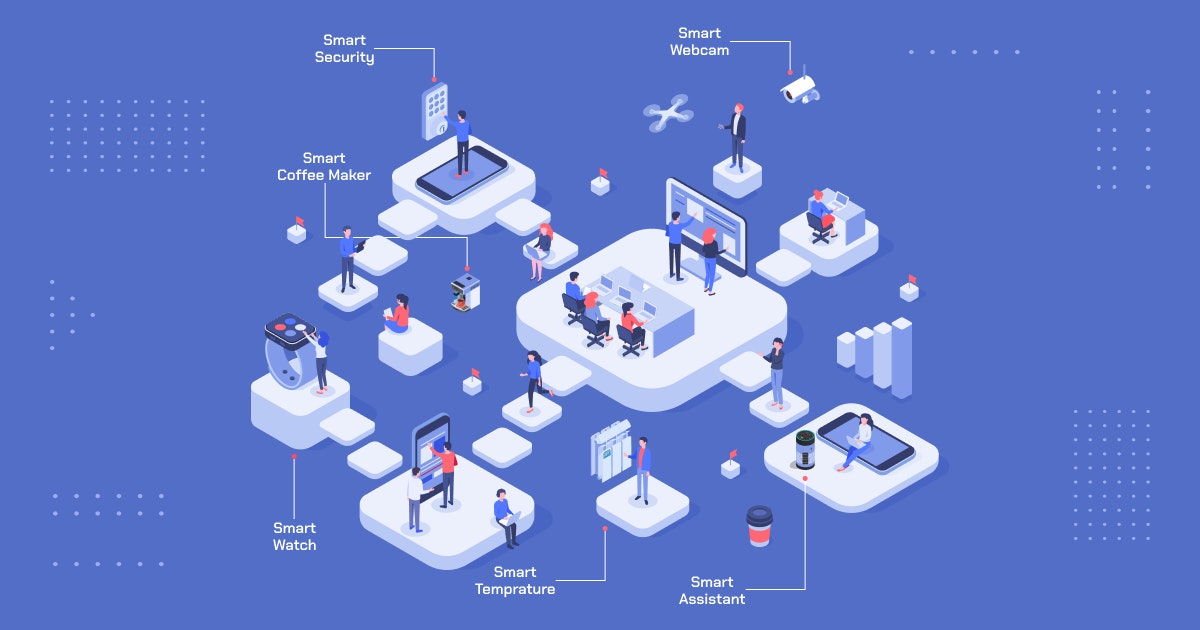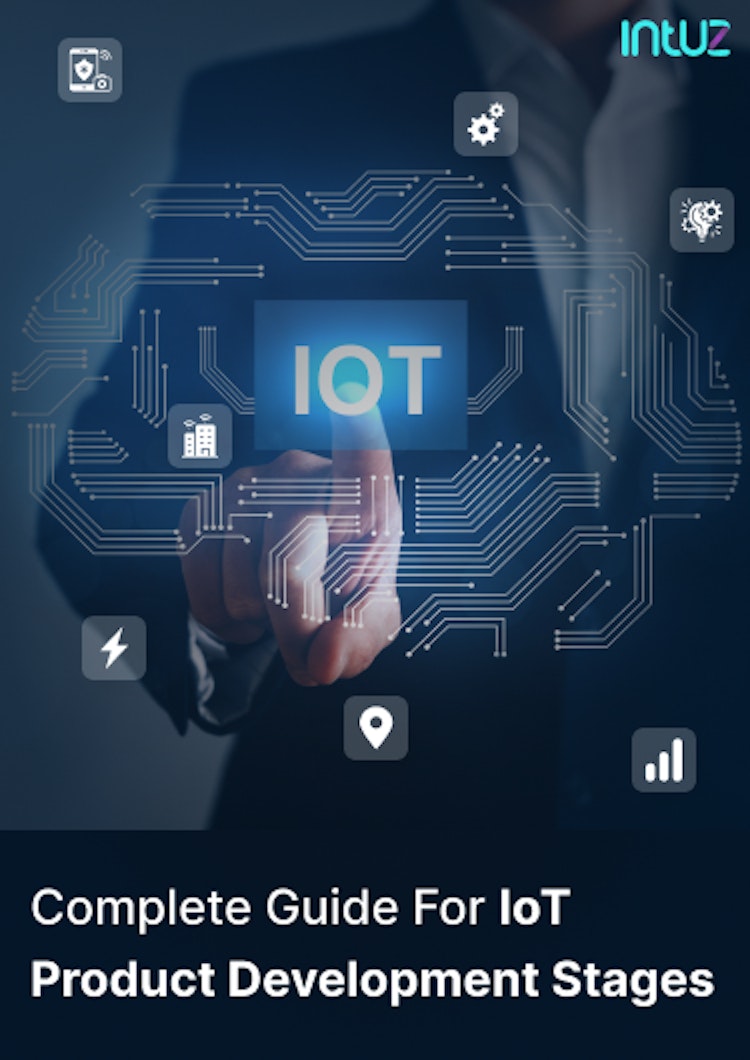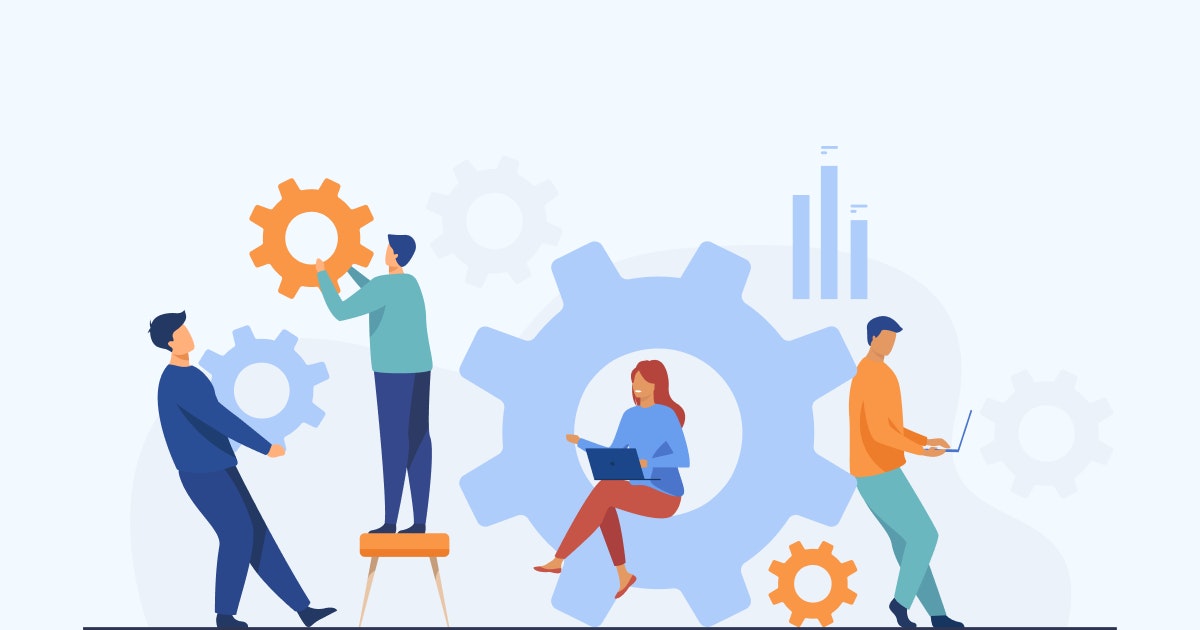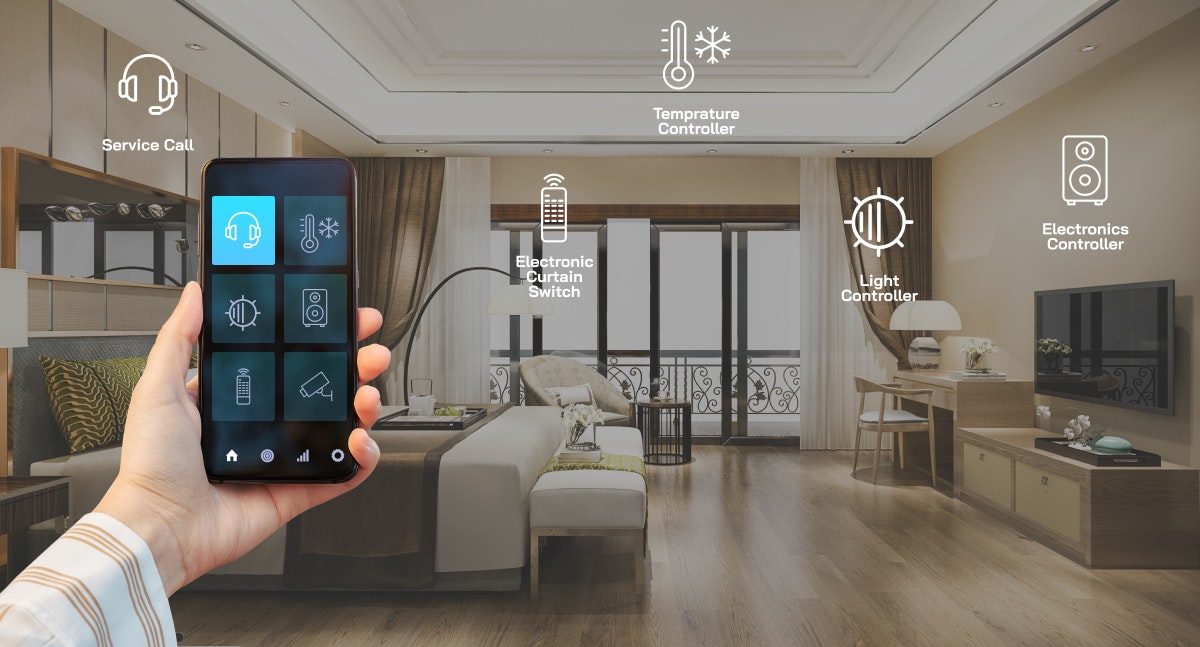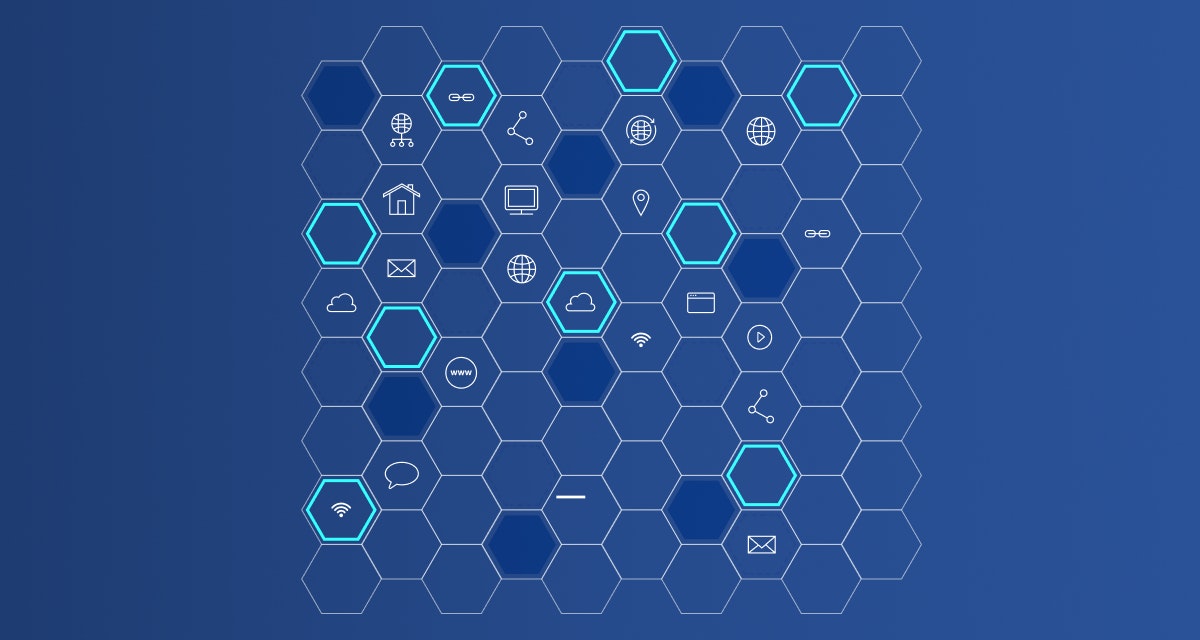Table of Content
Imagine an office that automatically opens the door to your cabin as soon as you arrive. It adjusts the room temperature by taking cues from the weather outside and puts the coffee maker to work when it is time for your team to arrive.
Would it not be fantastic for you to enjoy such a luxury? Well, guess what? That is some of the most fundamental things one can expect from IoT. This is the beauty of IoT technology, and we cannot stop gushing over it!
The face of today's workspaces is changing fast, and they are not shying away from incorporating IoT-enabled devices to be more efficient and productive in their endeavors. Moreover, IoT helps keep the overhead expenses to a minimum and enables humans to drive the business forward optimally.
Given how working in the physical world has changed significantly, connected technologies, new modes of collaboration, and smart sharing are taking business efficacy to levels we could not have even imagined ten years ago!
For instance, a portable workplace is made possible for many people by smartphones, which will remain the most common means of communication. The boundaries of a mobile workplace will keep expanding, given the presence of connected devices like employee wearables, beacons, and RFID tags.
Buildings are also getting more innovative and can make the typical workforce comfortable and safer. Soon the offices as we know them may get completely altered thanks to automation. The Internet of Things in the workplace will help boost productivity and efficiency while fostering a more collaborative work environment.
Stepping into a new dawn with IoT in the workplace
IoT has steadily changed every element of life, including how we live, what we do for a living, and how we interact with others. Offices today are equipped with IoT-enabled desks, automated systems, and smart lighting.
Besides convenience, IoT-powered gadgets help in saving costs by optimally utilizing resources. The number of IoT devices is expected to increase from 8.74 billion in 2020 to more than 25.4 billion by 2030, ensuring that rapid growth will continue.
So you see - smart offices are the future. The role of IoT in the workplace is critical due to this connectivity. The surging global demand has positively influenced the adoption of IoT in the modern workplace.
Research shows that the global smart office market size is estimated to grow at a CAGR of 11.1%, reaching $90.63 billion by 2030. That is a number we cannot ignore!
Rapid technological breakthroughs in fields such as IoT and the growing demand for sustainable methods of managing IT resources are the leading factors of the surge. Increasingly, more businesses are implementing IoT in smart office applications to:
Achieve workplace innovation
Maximize the productivity of their staff
Promote inter-organizational cooperation
Tap into the full potential of their resources
Boost Workplace Efficiency with Tailored IoT Integration!
Let's Get StartedAlthough many smart solutions have not yet become widely used, the advantages organizations experience show that IoT is well on its way to becoming essential to the workplace.
The magic of IoT: Transforming offices in this day and age
Come to think of it - A typical IoT-enabled office will look and act differently from a traditional workspace. That means everything - from the furniture to the coffee maker and the printer - will be connected through IoT technology, making the entire office super efficient. Who does not want that?
Plus, IoT-connected furniture pieces and appliances will actively contribute toward optimal resource utilization and cost reduction. For instance, smart LED lights in the conference room will switch off as soon as people vacate it.
In addition, motion sensors will let employees find a vacant meeting room and locate their co-workers whenever needed. It is not a surprise how IoT is altering how businesses oversee their work and personnel in the following ways:
1. Improved collaboration
The hybrid workplace is expanding owing to the COVID-19 pandemic. There is an increasing requirement for improved teamwork and assistance. Some of these needs are addressed by typical video conferencing systems. However, more advanced IoT solutions for the office can do more. Here is a sneak peek.
Better interactions are possible with high-end telepresence robots such as the Double 3 and Ava from Double Robotics and Ava Robotics, respectively.
The robots increase the virtual presence of the callers across any space. They can be attached to any existing computer to modify the static video call experience.
The immersive technology enables experts to visit facilities virtually anywhere across the globe. They can communicate with on-site employees and even remotely monitor hazardous locations.
2. New revenue streams
IoT big data solutions have transformed numerous business practices across industries. Thanks to IoT sensors, gateways, and modules, you can collect large data sets on customer behavior, product performance, industry trends, and so on.
In addition, wearables like Fitbit keep track of our eating, sleeping, and movement patterns. Businesses can thus improve their goods and services to better serve their customers with the insights they gain from this data.
Companies, particularly, can streamline short-term and long-term tasks by using data on business operations. They can use IoT solutions to spot patterns and fresh growth prospects and improve. Office automation frees the workforce to focus on complex tasks like finding a new market for an existing product or breaking into lucrative industries.
3. Intelligent building access
An easy and safe approach to entering facilities is through access control systems. These include smart office applications such as digital locks, card readers, and biometrics. Such apps use unique IP addresses that help employees communicate with one another.
Intruders are deterred while allowing employees admission to buildings without a plastic ID. Businesses may also allow employees to use connected IoT mobile apps to access a facility with their digital ID. The system monitors each user's access level and timing.
Any malicious action causes approved devices to trigger warnings and notify stakeholders. IoT in innovative office applications offers safety for employees and company assets.
4. Efficient office operations
IoT-powered workplaces result from a successful IoT installation at work. From WiFi scanners that copy and send scanned documents to smart sensors that regulate temperature and lighting - businesses can enhance regular office operations with the aid of various IoT gadgets. It does sound exciting, right?
Benefits of IoT office automation
Without a doubt - smart offices are on the rise, and there are numbers to prove this. Research shows that the global smart office market will hit $57.05 billion by 2025 - a massive jump from $18.46 billion in 2016 - because of IoT.
Companies want to get the most out of their employees and resources. They want to bank on cross-organizational collaboration and do well. Here is how IoT can automate an office space and optimize everything in its way:
1. Enhanced operational efficiency
IoT implementation, when done right at work, improves overall operational effectiveness. One of the simplest examples is the employment of AI software and smart voice-enabled speakers in workplaces.
Smart virtual assistants such as Google Assistant, Alexa, or Siri may set reminders for your most important activities to help you remain on top of task management while scheduling appointments or interviews.
2. Increased employee productivity
A pleasant physical work environment significantly increases productivity. Smart office automation, such as a smart lighting system that adjusts to employee mood, can keep staff members engaged and focused. It boosts productivity and helps reduce boredom.
In another example, an innovative standing desk takes care of employee health. It monitors how much time an employee spends working at the desk and reminds workers to stand up periodically to keep themselves active.
3. Proactive risk management
Decision-makers can take preventative action with the help of IoT in the workplace. The risks may be connected to the office space, resources used, online tools, and employees in general.
For instance, an IoT-enabled workplace keeps track of working conditions and detects levels outside the normal range. It senses excessive temperatures, humidity, vibrations, smoke, and so on to ensure comfortable and ambient working conditions.
IoT predictive maintenance alerts also help the organization identify the need to repair equipment flaws to avoid breakdowns and accidents.
4. Streamlined supply chain management
Logistically speaking, supply chain management has been streamlined in several ways by IoT. RFID chips or sensors are one of IoT's most widely used applications. These are affixed to storage containers, raw materials, or finished goods.
RFID tags track and authenticate their positions in real-time using GPS. This in-the-moment data on product movement and position allows suppliers, manufacturers, and distributors to plan for the arrival of items and cut down on handling delays. It also enables you to create a backup plan in case of delays.
5. Strengthened workplace safety
Today, IoT technology assists businesses in tracking internal and external factors that affect employee safety. They can monitor and measure worker behavior patterns on the production floor to spot injury or harm hazards.
Smartwatches, coats, and helmets track their travels and warn them of dangerous situations and off-limits locations to stop tragic accidents and unnecessary delays. For example, the Ford Motor Company and General Motors offer exoskeleton vests that make it easier for the staff to perform overhead duties that involve lifting hefty objects and weights.
6. Excellent cost management
IoT devices can offer actionable insights into cost-saving areas when paired with AI. It employs predictive analysis to stop untimely machine failures, downtime, and expensive repairs.
For instance, a smart building uses IoT devices to monitor various attributes, such as humidity, the distance between two objects, vibration, and sound, analyze the data and offer unique insights into usage patterns.
IoT Protocols: Making IoT Data Communication Seamless
Learn MoreChallenges of IoT while digitizing workspaces
You can adjust the production procedure after considering the probable system failures. Yes, IoT-enabled offices have so much to offer to businesses of all sizes. However, there are concerns regarding its adoption. Let us look at a few problems:
The dangers of data leaks may increase your worries.
Organizations may run across similar problems as they construct their strategic plans even though IoT standards are still in their infancy.
Businesses anticipate that a new environment would necessitate expensive investments.
Workplace IoT hurdles only arise when businesses appear unprepared to embrace modernization.
Impact of IoT in the workplace
Now that you have understood the pros and cons of automating workplaces with IoT, you have to understand the technology's impact on workplaces and how you can better prepare for it and enjoy it in the process. Let us go:
1. Improved employee engagement
The impact of IoT in the modern workplace affects employee engagement. New working methods are offered, productivity increases and people's interactions improve with new technologies.
Research shows that process improvements inside an organization can favor the productivity and motivation of specific personnel. Companies may connect and communicate using smart devices powered by IoT, ensuring that all users receive essential data in real time.
2. Added flexibility
Organizations can let their staff work from just about anywhere because of IoT technology. However, we have tried and tested that during the pandemic with bleak results.
Due to the pandemic, the traditional line between work and life has been blurred for most professionals. That has not stopped many businesses, including various Fortune 100 and 500 companies, from making remote work arrangements permanent.
3. Enhanced customer experience
Brand loyalty is not solely dependent on the quality of goods or services sold by a business anymore. At the end of the day, it is all about how the customers feel when they buy from you; it is about customer experience.
Successful businesses form a close emotional connection with their clients, which increases brand loyalty. IoT has consequently evolved into a crucial tool for enhancing customer experience. A study found that using smart sensors and devices was capable of gathering and transferring data on many contact points.
Additionally, they can lessen bad encounters and boost positive ones. After a sale, the IoT gadgets can make follow-ups easier. You might also use these tools to remind your customers how to maintain their purchased goods and elongate their life.
4. Seamless automation
The oil and gas sector may benefit significantly from Low-Power Wide-Area Network (LPWAN) technology regarding operational efficiency and asset visibility.
By proactively planning maintenance, it may also encourage real-time insights into the status of machines. Some manufacturing organizations have already utilized Industrial IoT (IIoT) sensors to regulate quality and boost productivity.
These projects deploy specific kinds of sensors that can examine a machine's temperature and keep track of the vibrations and sound frequencies.
Smart office automation applications you must consider
Smart offices offer many growth opportunities to businesses. From efficient energy consumption to increased proficiency in day-to-day work, there is a lot to gain. Sure, there are concerns - every coin has two sides, right?
However, it is up to you to decide whether embracing this technological advancement is worth it. And if you do decide to go ahead with it, you take the chance of future-proofing your business and gaining a competitive edge. Here are the top smart office automation applications you can hope to enjoy:
1. Occupancy sensors
Occupancy sensors assist by displaying the location of persons on each level or room. These modern devices interact seamlessly with your Integrated Workplace Management System (IWMS) or space management software. They are connected via the IoT, allowing the data to be shown on your digital floor layouts. This makes it simple to spot spaces like tiny conference rooms or break rooms that are getting too crowded and might need to be rearranged.
2. Asset management systems
In today's hybrid workplace, it might not be easy to keep track of everything - from hardware and building systems to office furniture and sensors. Getting real-time information on the performance of each asset is made simpler by deploying IoT.
3. Energy-efficient buildings
IoT sensors for the workplace are becoming more sophisticated and affordable. They can now collect and send data over greater distances since they are smaller, more dependable, and more advanced. You can calculate the average and maximum occupancy at various times of the day and modify the lighting and thermostats accordingly. This arrangement helps you save energy and cut your utility costs.
4. Autonomous networks
Your sensors, cameras, beacons, and even the cellphones of your staff can all connect directly with building systems to provide the perfect experience to your workforce. As a result, working in an office becomes as unrestricted as working remotely. There are fewer distractions, and the employees can connect with workplace systems while on the go.
5. IoT-powered sensors
There are several ways in which IoT technologies foster productivity. For example - our ability to find items and acquire instructions from people and locations is made more accessible by connected gadgets.
Thanks to sensors, employees can reserve open spaces at their desks or other office areas by simply sitting down. Yes, you heard that right! IoT gadgets can also aid in increasing worker safety in potentially dangerous environments.
6. AR solutions
You can create an immersive workplace with cutting-edge, immersive technological solutions like Augmented Reality (AR). Employees could use AR to engage with papers that appear in front of them, whether in a meeting room with colleagues or attending the conference - on video - visually. Collaboration in the hybrid workplace is encouraged and easy to adopt due to IoT.
Create a Smarter Workplace: Let's Talk IoT Solutions!
Contact UsOver to you
We are rapidly approaching a period of peak automation when technology will take care of all the tedious, repetitive duties, leaving human beings to perform at their most efficient selves and concentrate on creative and complex tasks.
The workforce can invest their time in looking at and working on the big picture - precisely what a human brain is designed to do. It helps provide a more individualized experience, something that we all crave in this day and age.
A new era of commercial automation has been ushered in by IoT, and there is no stopping that. Through its ability to link smart gadgets and people, the technology is helping many organizations expand their reach beyond geographical boundaries.
Businesses can surely benefit from smart office automation using IoT to speed up work and efficiently use energy. Implementing IoT in the workplace offers businesses an opportunity to future-proof their operations and gain a competitive advantage.
If you are looking to build an IoT-based Smart Workplace management system for your office or workplace and need tech support that delivers, look no further.
Book a Free 45-minute Consultation with Our IoT Experts Today! Get a customized roadmap and strategies to leverage IoT for a smart workplace.
